- Home
- Transportation
- 78 years ago, the B-24 Liberator took its first flight - here's how it helped bring down the Nazis
78 years ago, the B-24 Liberator took its first flight - here's how it helped bring down the Nazis
By the beginning of 1941, other manufacturers had joined the effort to build B-24s. The Ford Motor Company made the audacious promise to build one bomber every hour — a claim that drew derision from the aircraft industry, which doubted an automobile company was capable of such a feat.

In January 1942, when Edsel Ford, then the president of the company named after his father, first saw the B-24 at the Consolidated Aircraft factory in San Diego, he said, "It appeared a monstrosity." A prototype had been completed a year earlier, and the finished product was 66 feet 4 inches long and 17 feet 11 inches tall, with a wingspan of 110 feet — the longest of any aircraft of any kind in the US.
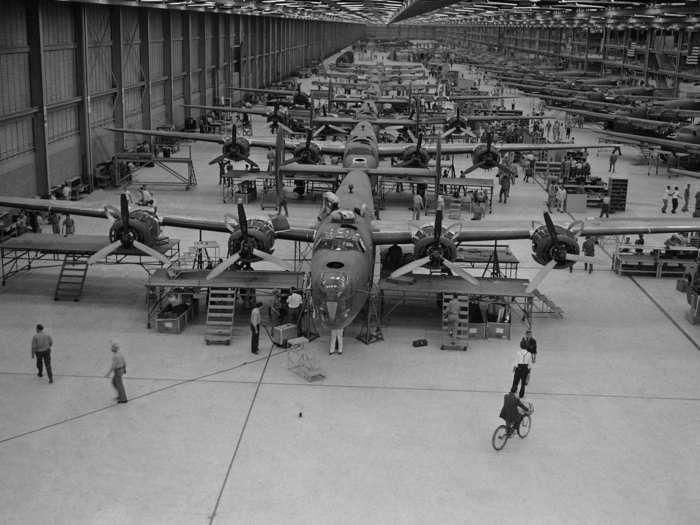
The wings were "exceptionally long and unusually narrow, with a high-aspect ratio that provided extraordinary lift," A.J. Baime writes in "The Arsenal of Democracy." The wing "was mounted shoulder-level on the fuselage so that it looked like arms outstretched, and the four engines hung down."
The Ford team found it would need 5 miles of wire, cut into almost 3,000 pieces ranging in length from 8 inches to 32 feet, for a B-24. The plane's components were 85% aluminum alloy and 13% steel. The rest was a mix of magnesium, brass, plastic, rubber, and other materials.
Each bomber also required 360,000 rivets — some one-sixteenth of an inch long and weighing .00005 pounds; others 50 times as long and weighing 0.05 pounds.
Ford and his top engineer, Charles Sorensen, believed Consolidated Aircraft had "created a hell of a weapon," but they criticized the company's production method, which was time-consuming and done in the open air, exposing the plane to the heat and cold. The Ford team knew how to build a lot of B-24s quickly: mass production on an assembly line.
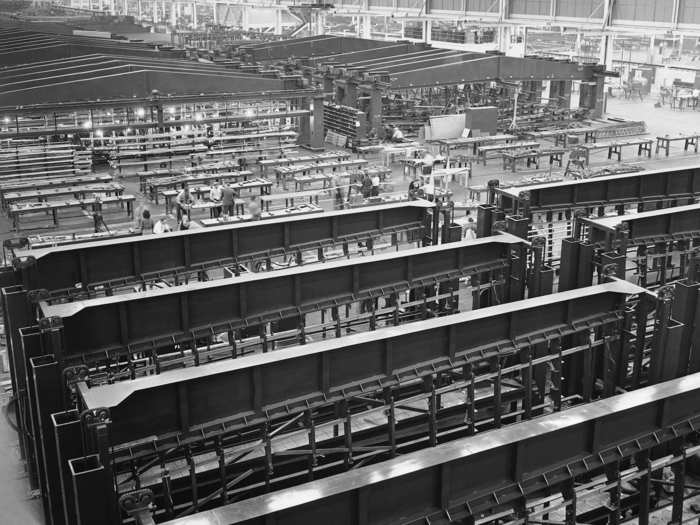
Depending on the model, the B-24 was manned by a crew of between seven and 10 men stationed around the plane's cramped confines. The bombardier, stationed in the belly, controlled the payload doors. The flight crew, including the navigator and flight engineer, also manned the bomber's machine-gun turrets, which were set in the nose, tail, spine, and belly.
Twenty seven gauges and 12 levers spread across the instrument panel in the cockpit, used to control the bomber's speed and fuel. The four engines could put out a total of 4,800 horsepower, then the equivalent of 56 Ford V8s.
Source: Military Factory, "The Arsenal of Democracy"
"To compare a Ford V8 with a four-engine Liberator bomber was like matching a garage with a skyscraper," Sorensen wrote. But he formulated a plan to build B-24s that won over Edsel Ford: Make them on an assembly line housed in the largest factory in the world, a mile long and a quarter-mile wide, churning out one heavy bomber an hour. The plan would lead to the construction of the massive Willow Run plant near Ypsilanti.
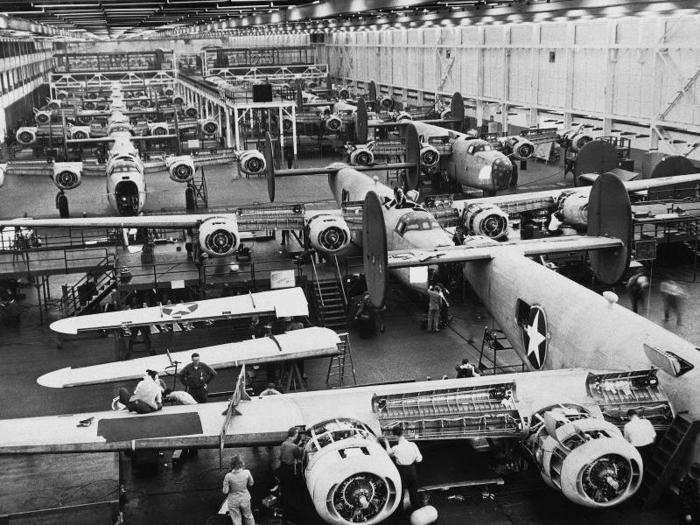
The government initially rejected the proposal, but Ford secured a $480 million contract for 1,200 "knockdown" B-24 airframe assemblies — everything but the engines delivered in pieces — and 800 complete planes, on March 3, 1941.
The Ford team encountered numerous problems in its push to get production going. New blueprints had to be made; the new plant needed custom-made tools and equipment; the plant had to be staffed, and the staff had to be trained and housed.
Throughout the war, the Ford Company would have navigate labor disputes and racial tensions at its plant and in nearby Detroit. The fraught relationship between Edsel and his father, and their fight for control of the company's future, added to the drama.
The attack on Pearl Harbor solidified the belief among US leaders that air power was essential. Roosevelt's secretary of war, Henry Stimson, told the president that the four-engine bomber had caused a "reversal of the strategy of the world." Roosevelt himself was reportedly "a believer in bombing as the only means of gaining a victory." But reports that the German war machine was producing advanced, versatile aircraft in fearsome numbers worried the Allies — Roosevelt himself would watch US aircraft production numbers intently throughout the war.
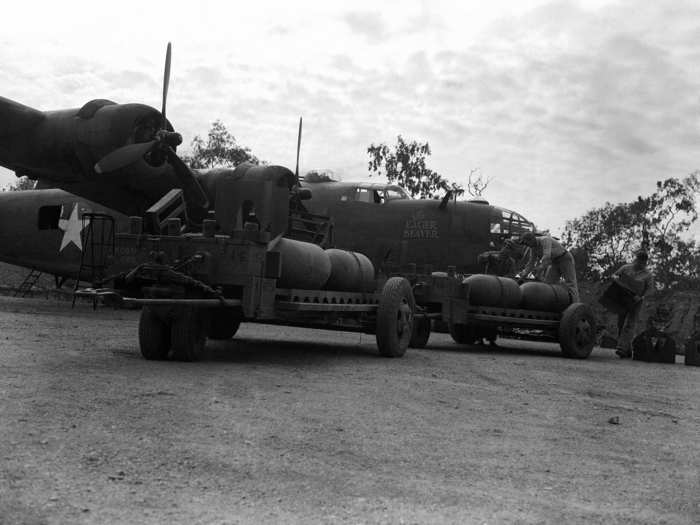
The first piece of B-24 was completed at Willow Run two days after the attack. But Edsel had promised that the massive bombers would take flight in May 1942.
After numerous delays and production problems, Bomber Ship 01 took off from the air field adjacent to the Willow Run plant on May 15, 1942. (Though it would be months before Ford hit its bomber-a-month production goal.)
"It was HUGE. I was completely amazed by its monstrous size, its four mighty engines," a pilot who flew the B-24 said upon first seeing the bomber.
Winston Churchill picked an American-made B-24 to fly him to the meeting of Allied leaders at Casablanca in early 1943. Its bomb racks had been replaced with passenger seating.
By the start of 1942, four companies were contracted to build B-24s: Consolidated Aircraft, which was the original designer, Douglas, North American, and Ford, the only firm that was not originally an aircraft manufacturer.
The B-24 was designed to be the US's fastest heavy bomber. Its top speed was 300 mph, and its range — 3,000 miles — was more than any other American airplane. Its maximum payload, 8,000 pounds, was more than any other US bomber could carry. When it rolled down the runway on its tricycle landing gear — a new design feature for bombers — its takeoff weight could be up to a colossal 60,000 pounds — the front tire, itself 3 feet tall, could carry 27,000 pounds on its own.
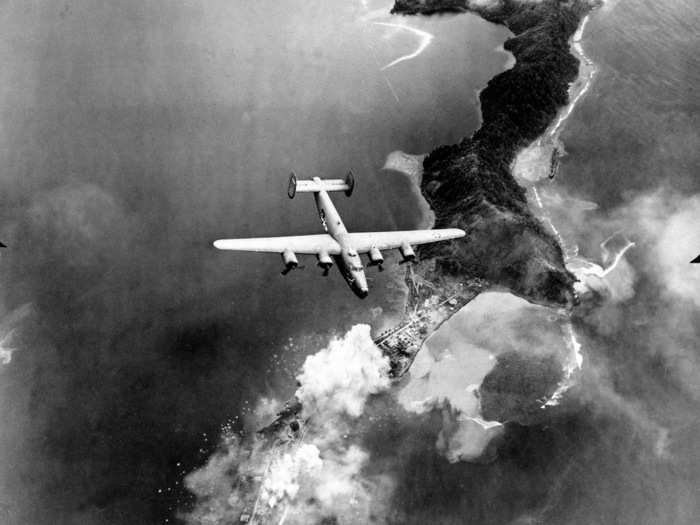
The bomber had a thin aluminum skin, and the pilots sat in cast-iron seats to protect them from incoming flak and gunfire. Some 4,000 feet of rubber and metal tubing coursed through the B-24, shunting fuel and fluids through the aircraft.
The B-24 carried 18 rubber fuel cells, 12 in the center wing and three more in both outer wings. The cells carried 16,320 pounds, or 2,720 gallons, of 100-octane gasoline, and if a bullet was shot through them, they were self-sealing. The bomb hold was designed to carry the 8,000 payload three ways: four 2,000-pound bombs, eight 1,000-pound bombs, or 12 500-pound bombs and 20 100-pound bombs.
Each bomber was held together by 360,000 rivets — some one-sixteenth of an inch long and weighing .00005 pounds; others were 50 times as long and weighed 0.05 pounds.
Source: "The Arsenal of Democracy"
B-24s would operate in every theater of the war. Its range allowed it to cover the long distances between targets in the Pacific and to shield Atlantic shipping lanes from roving U-boats. Before Allied leaders left their first meeting at Casablanca in January 1943, US commanders had an ambitious plan for the Army Air Corps' most important target in Nazi-occupied Europe: Ploesti, a Romanian city home to sprawling oil refineries. A successful strike there could take out one-third of Hitler's oil production. The city was "the taproot of German might," Churchill said.
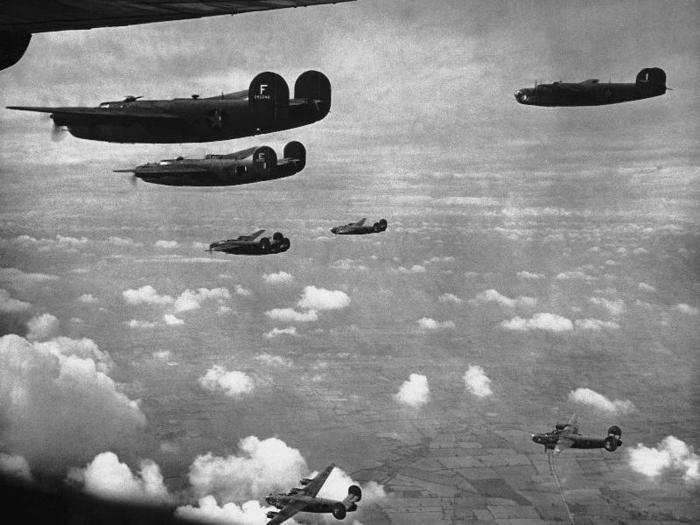
Flying from Benghazi in the Libyan desert, it would be a round trip of roughly 2,400 miles. The B-24 was the only bomber with the range and firepower to reach Ploesti and take out the facilities there. Allied commanders called the mission Operation Tidal Wave and scheduled it for August 1943.
But Ploesti was also the most heavily defended oil installation on the planet, with radar-warning systems and countless batteries of German 88-millimeter anti-aircraft guns, with which Allied flyers in Europe had become all too familiar.
The first Allied effort to knock out the refineries at Ploesti was costly and unsuccessful. Operation Tidal Wave kicked off on August 1, 1943, with 178 B-24s manned by 1,763 Army airmen leaving Libya laden with extra fuel for the 13-hour flight. They carried "more killing power than two Gettysburgs," an Air Corps journalist said. But the armada was detected by German sentries in Greece. The mission was further complicated by dense cloud cover north of Greece. Confused and disorganized, the US crews flew into a dense thicket of Nazi anti-air defenses.
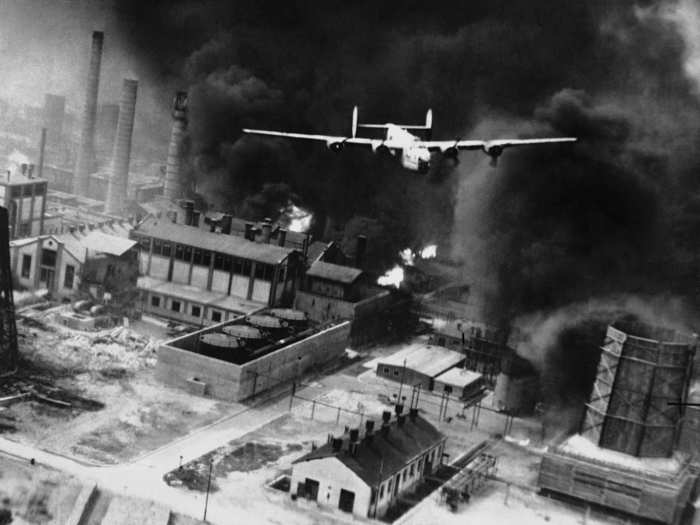
The entire attack on Ploesti lasted 27 minutes. The B-24s who survived the onslaught over the city turned for home, pursued by German fighters that picked off more American bombers.
Just 88 B-24s made it back to Benghazi, and 446 American airmen were killed or missing in an attack that only knocked out less than half of Ploesti's refinery operations for a brief period.
Source: "The Arsenal of Democracy"
"We flew through sheets of flame, and airplanes were everywhere, some of them on fire and others exploding," said Col. Leon Johnson, commander of the 44th Bomb Group, of the attack on Ploesti. "It's indescribable to anyone who wasn't there."
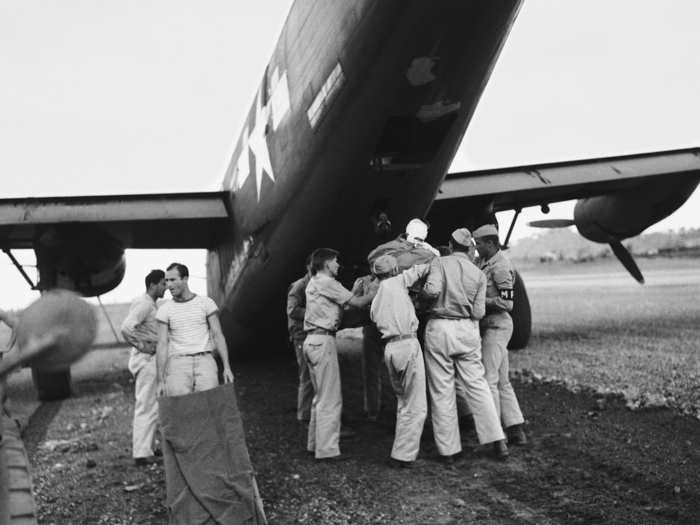
The Army Air Corps took heavy losses of men and machines, but prodigious US production kept sending aircraft to the front.
During their conference at Casablanca in January 1943, Allied planners agreed on a strategy for their bombers. American bombing efforts would focused on strategic targets — factories, ports, military bases, and other infrastructure vital to Germany's military output, during the daytime.
At night, British bombers targeted German cities, in what many felt was retribution for the Nazi Luftwaffe's savage attacks during the Blitz and the Battle of Britain.
The top-secret plan was called "The Combined Bomber Offensive."
Source: "The Arsenal of Democracy"
In April 1944, Allied bombers returned to Ploesti. On the first mission alone, nine groups of B-24s and four groups of B-17s dropped almost 1.2 million tons of TNT on the city. The columns of smoke they left behind could be seen tens of miles away. "We really clobbered them that day," said Bill Harvey, a bombardier on a Liberator. Airstrikes continued over the next few weeks, bookended by a May 31 bombardment carried out by 428 B-24s. The strikes dealt serious blows to the Nazi war machine. German planes were grounded and panzers stopped in their tracks.
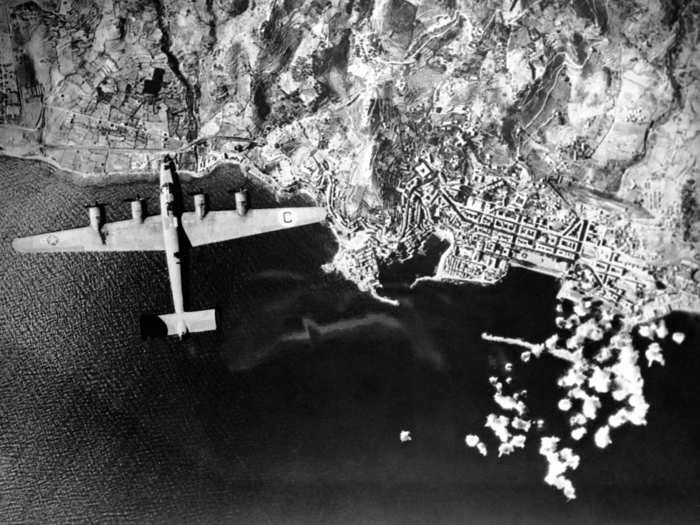
Source: "The Arsenal of Democracy"
At home, more and more planes rolled off the assembly line. Hours before the D-Day landings on June 6, 1944, Roosevelt was given production numbers showing 10,000 B-24s had been built between 1940 and 1944. By the time of Normandy landings, the Liberator was already the most mass-produced plane of any kind in history. "Yes, the Nazis and Fascists have asked for it," Roosevelt said. "And they are going to get it."
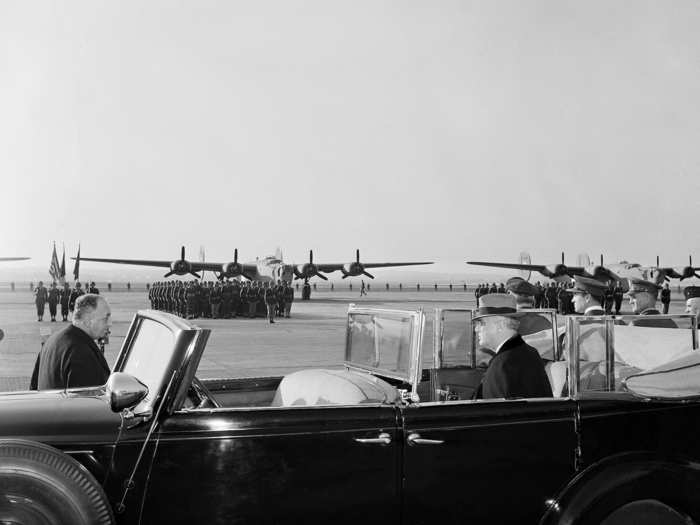
Source: "The Arsenal of Democracy"
B-24 crews called their plane the "Flying Box Car," "Spam Can in the Sky," and "Old Agony Wagon." B-24 crews included members who would become famous after the war, like Jimmy Stewart, Clark Gable, Walter Cronkite, and Andy Rooney, who served alongside thousands of other airmen.
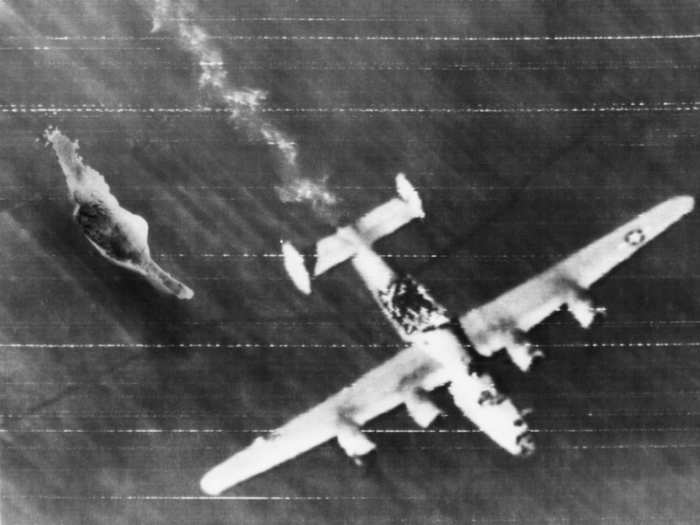
Source: "The Arsenal of Democracy"
"I was a ball turret gunner on a B-24 Liberator. My first experience in a ball turret was in combat. It was not exhilarating. It was terrifying," said one B-24 crewman. "All just flak. Flak — that's what killed most of our people. In the ball turret, you had a good view. It was hell. You could see the bombs land. We weren't sending enough of the bombs down as far as I was concerned. I didn't care what we did to the people on the ground. They were shooting at me and I wanted them gone."
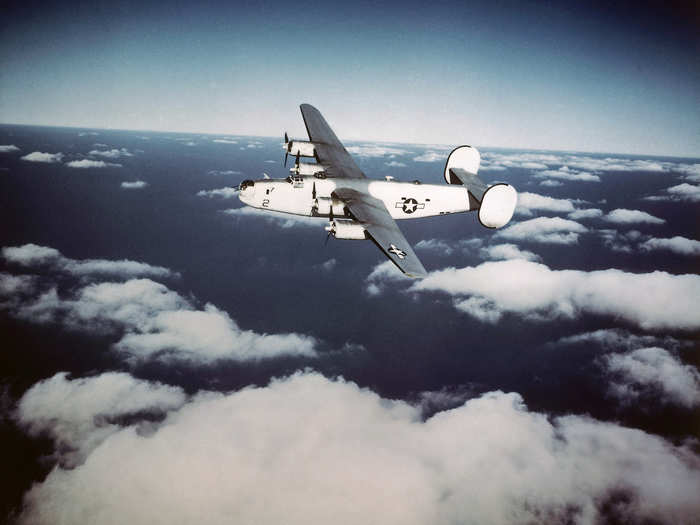
Source: "The Arsenal of Democracy"
Of the 416,800 Americans killed in combat during World War II, 79,265 of them were airmen.
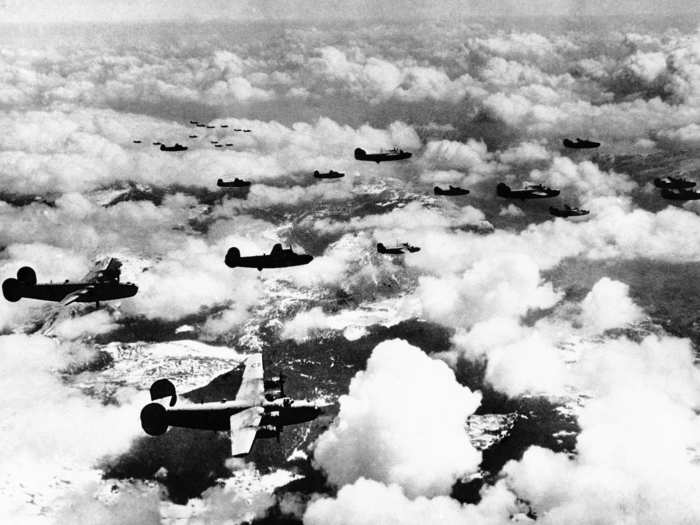
Source: "The Arsenal of Democracy"
By the end of the war, the Ford company, other manufacturers in Detroit, and the whole of the American war industry had produced a staggering amount of material. The US built 324,750 airplanes during the war, more than Britain and the Soviet Union, the second- and third-biggest producers, combined. Of those planes, 18,482 were Liberators, and 8,685 of them were built at Ford's Willow Run plant.
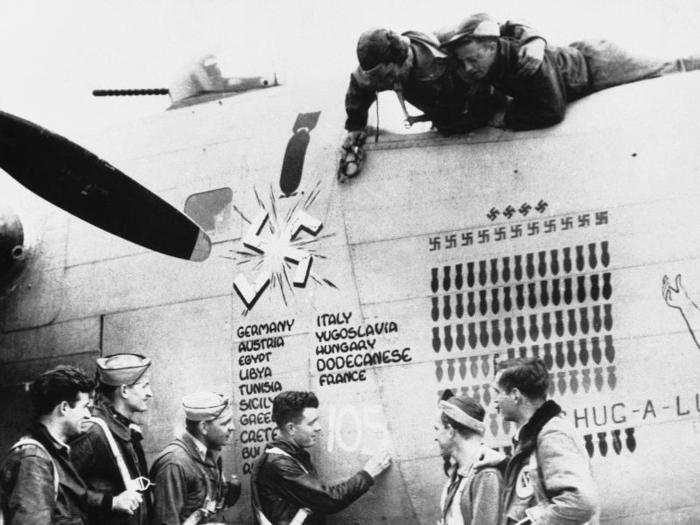
Source: "The Arsenal of Democracy"
"The number of people involved in making it, in servicing it, and in flying the B-24 outnumbered those involved with any other airplane, in any country, in any time," Stephen E. Ambrose wrote in "The Wild Blue." "It would be an exaggeration to say that the B-24 won the war for the Allies. But don't ask how they could have won the war without it."
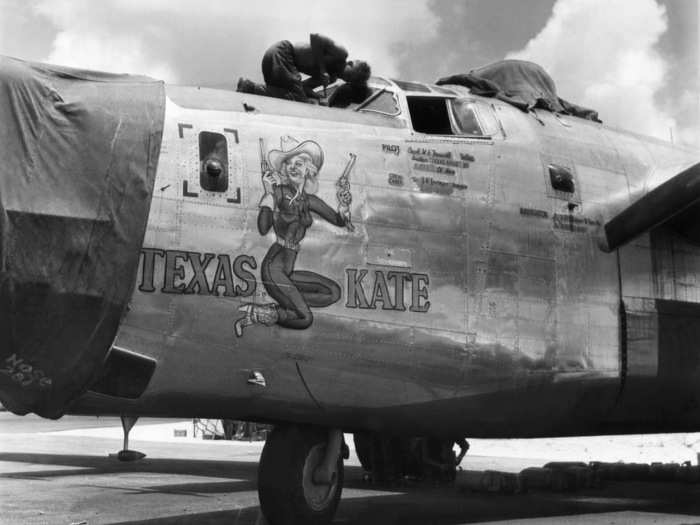
Source: "The Arsenal of Democracy"
Despite its capabilities and performance, the B-24 was already technologically obsolete by the end of the war. The Army had started testing its "superbomber," the B-29 Superfortress, in summer 1943. The B-29 had a better range and could carry a bigger payload than the B-24, and its pressurized cabin let it fly at higher altitudes. On August 6, 1945, a B-29 dropped the "Little Boy" atomic bomb on Hiroshima. Three days later, another B-29 dropped the "Fat Man" atomic bomb on Nagasaki. Japan surrendered on September 2.
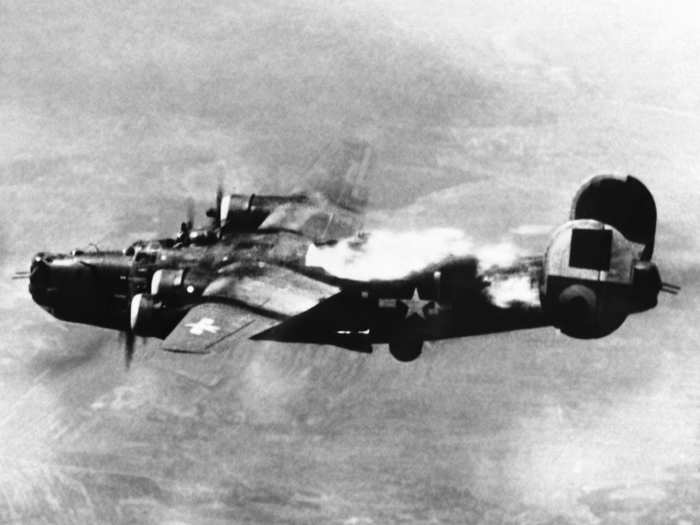
Source: "The Arsenal of Democracy"
Popular Right Now
Popular Keywords
Advertisement